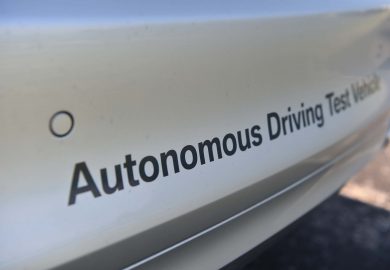Waymo recently posted a YouTube video of its new self-driving car. In the video, viewers see how the car’s technology works and how an actual ride looks. Waymo started as part of Google in 2009. At that time, Google wanted to join the race to release the first autonomous car. Today, Waymo operates as a subsidiary of Alphabet Inc.
Behind the Wheel of Waymo’s Self-Driving Car
Waymo’s new robot taxi service is starting in Phoenix, Arizona. The recent video of one of its vehicles was created to make people more comfortable with the concept of a ride in an autonomous car. LIDAR and radar sensors work with cameras to give Waymo’s fleet of Pacifica Hybrid vans the ability to drive autonomously. In the video, there are highlighted vehicles and areas of the road to give viewers a better idea of how much the vehicle sees with its sensors and cameras. In addition to its ability to detect surroundings far ahead and to the sides, the system processes multiple bits of data simultaneously. It also detects people, objects, and vehicles to the rear. With Waymo’s advanced technology, the self-driving car sees further in any direction than the human eye.
In the 360-degree video, viewers see a Pacifica with Waymo’s technology approaching an intersection. The video highlights vehicles to the sides and straight ahead. As the narrator says, the Pacifica predicts what those vehicles will do. To provide an example, the video shows a vehicle to the right of the Pacifica that is about to make a left turn. The high-powered sensors do not just detect the presence of objects. They detect whether objects are fixed or moving. If an object is moving, the sensors detect its speed and movement patterns.
By doing this, the system helps determine risks. For example, the Pacifica’s technology can detect a fast-driving car that is weaving and moving toward it.
Waymo’s autonomous car also detects many street signs and traffic lights. It combines the data with real-time information about its surroundings. In the previous example, this added ability makes the system able to determine if the fast-driving car is speeding or if higher speeds are permitted in the area. With its mapping capabilities and programmed information, Waymo’s Pacifica always knows where it is. The video narrator says that the vehicle plans a safe journey to any destination while it gathers data about risks on the road. In the video, the car slows down and allows a bicyclist to go past with plenty of room, and it detects a pedestrian to avoid while the individual crosses the street.
Will Riders Trust Waymo’s Autonomous Car?
The video helps put some people at ease with its explanation of Waymo’s technology before it shows a live demonstration. As the narrator says, the first thing that passengers notice is the lack of a driver and the self-turning steering wheel. Recently, the Arizona Department of Transportation gave Waymo approval to operate as a transportation network. To help the public see that it focuses on safety, the company has a partnership with Mothers Against Drunk Driving. Waymo is rolling out its ride services in Phoenix.
Although the technology seems completely new to many people, Waymo has been testing it extensively for several years. According to Waymo, its fleet of test vehicles recently logged a cumulative total of five million street miles. Its testing program spanned 25 cities in the United States. In addition to its past tests on actual streets, Waymo tested the vehicles in virtual settings. In 2017 alone, the fleet logged a cumulative total of 2.7 billion virtual test miles in simulated situations.
Current videos of the Waymo vehicles show them turning, accelerating, and braking effortlessly. However, the company experienced some problems as it developed and tested its system of cameras and sensors. In the past, the technology had difficulty predicting unprotected left turns. Current demonstration videos show Waymo vehicles making left turns without any problems, which indicates that the issue must be remedied. A spokesperson for Waymo said that the multiple left turns depicted in the videos were not purposely planned in response to the previous turning issue.
Waymo’s marketing leader wrote a blog post about the reactions of riders. In Phoenix, most passengers relaxed quickly in the autonomous car. New legislation in California allows fully autonomous cars to operate test rides without safety drivers behind the wheel. This is a big step toward increasing access of these cars to the public. Within the next few years, some competitors hope to release Level 4 self-driving cars for the public to purchase.























